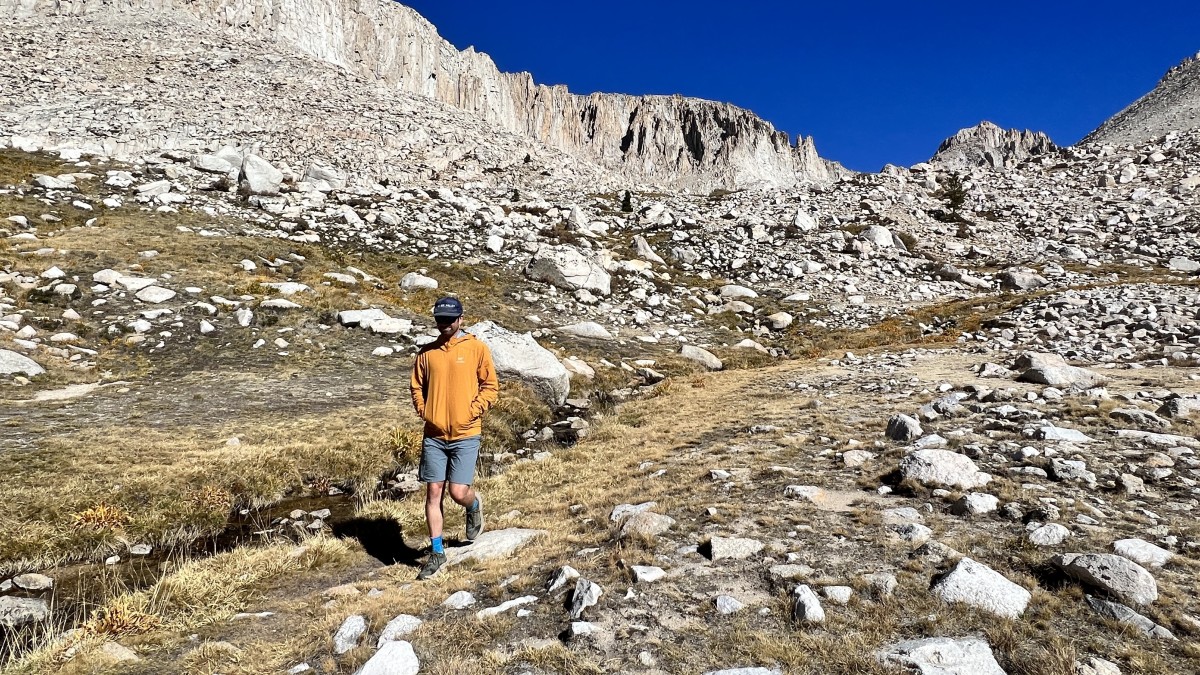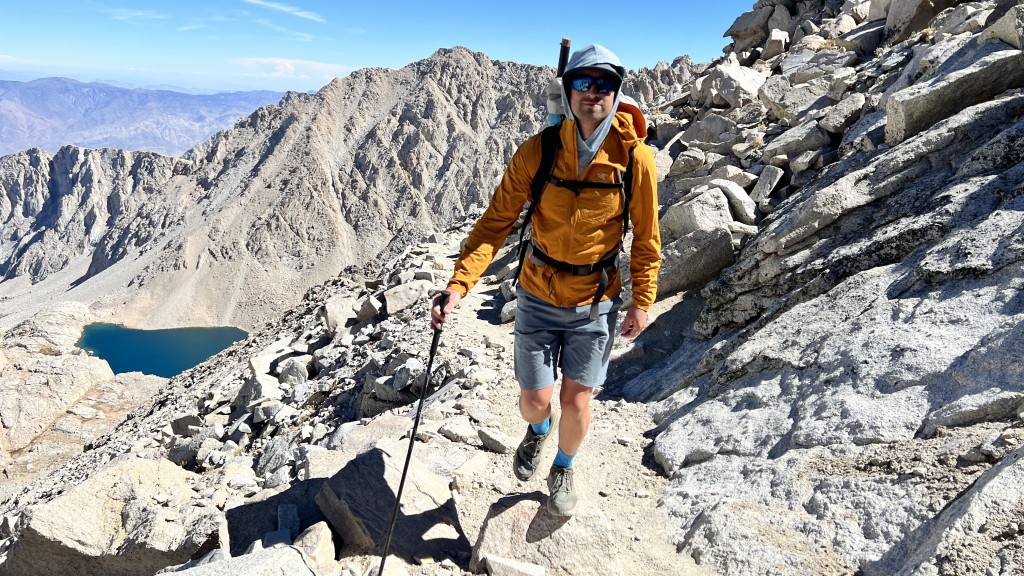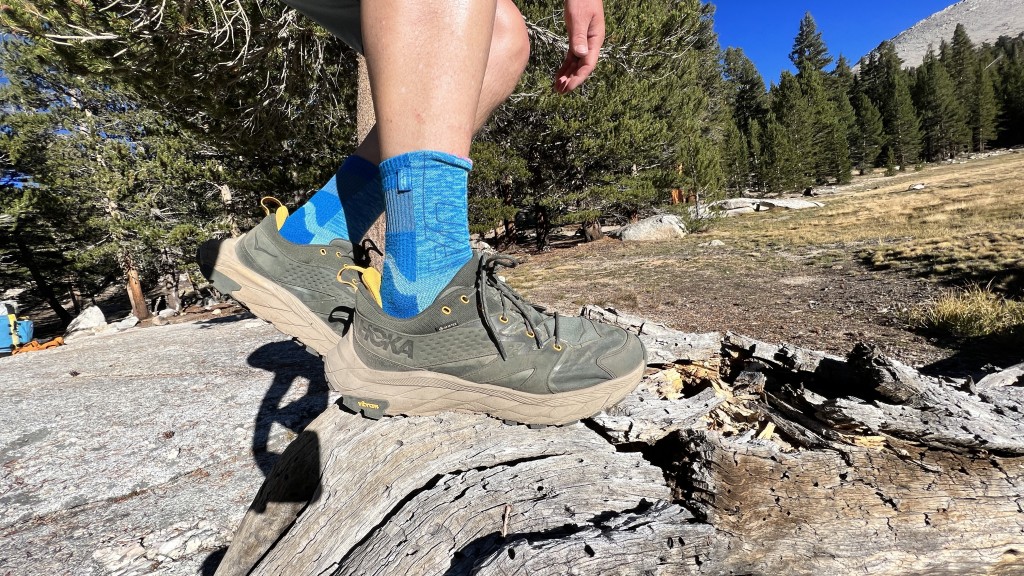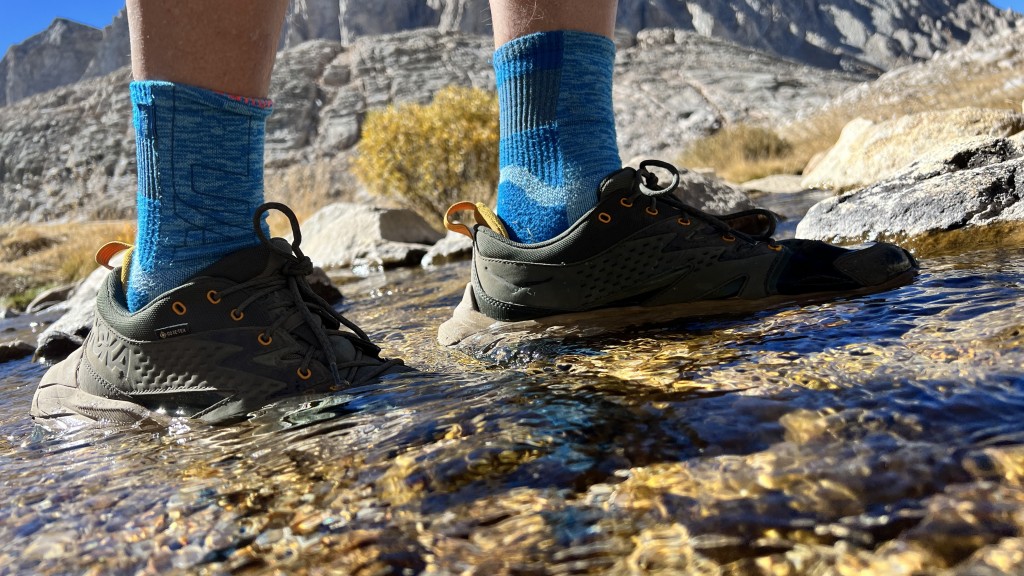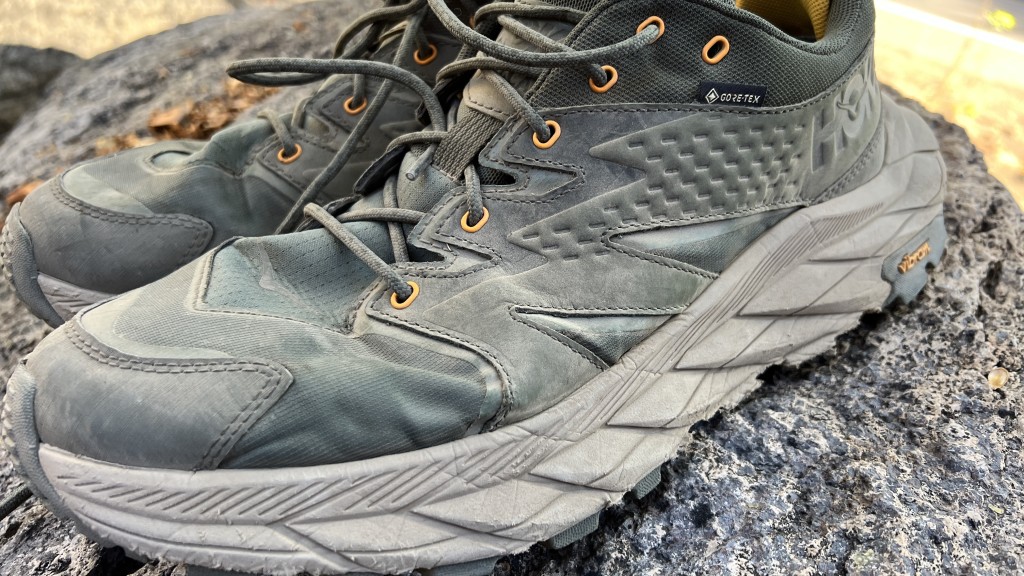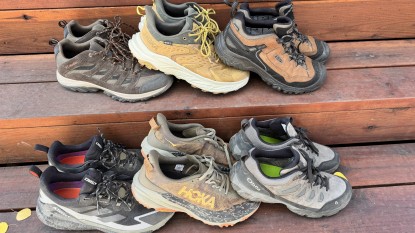Our Verdict
Our Analysis and Test Results
We took the Hoka Anacapa Low GTX shoes out of the box and immediately took off on a section hike along the Sierra Nevada's famed John Muir Trail. While we personally tend to love our trail running shoes for hikes, the Anacapa is amazing at bringing the performance of a running shoe with the added durability and support of a hiker. This is a shoe we will not give back until they fall apart at the seams.
Performance Comparison
Comfort
If there was one headline to describe the Anacapa Low GTX, it would have to be comfortable. Well known for their cushioned, rockered soles, Hoka has long been trying to perfect their hiking shoes since stepping into the market several years ago. Many have chosen Hoka shoes for their enhanced comfort on hard and unforgiving trails that are mostly comprised of granite. We find that the Anacapa Low takes that soft and cushioned ride and puts it into context in a hiking application.
What does that even mean? Well, the trail runners we have learned to love while out hiking on the trail can be soft and pliable and offer excellent cushioning, but in the absence of an EVA molded midsole, as the Anacapa has, you end up feeling way more of the trail than you might want. With these shoes, you get the smooth ride of a runner thanks to the rockered sole and the extended heel, but they feel more balanced for hiking over rough terrain.
Support
Support is another metric in which the Anacapa rises to the top. When first slipping into these shoes, your ankle feels securely cradled by the snug heel cup, and the foot is held in place by a classic lacing system that works great for a medium-volume foot. The heavier materials that the Anacapa uses, at least compared to some of their all-mesh running shoe counterparts, securely wrap around the foot and give some measure of reassurance that you won't get a rolled ankle while bounding along the trail.
The 5-inch wide forefoot makes a stable walking platform that extends beyond the foot to give the feeling of stability when walking on uneven ground. The compression-molded EVA midsole has a surprising amount of torsional rigidity for a shoe this lightweight, giving it an edge over those shoes that lack any added midsole stiffener. We are talking about hiking shoes, after all, which by definition, tend to be no higher than the ankle. But the deep heel cup gave us more confidence than other low-cut models, and we found the Anacapa to be one of the most supportive models in this review.
Traction
The Anacapa Low GTX uses a Vibram Megagrip outsole, with good results. We have really liked this rubber compound from Vibram when testing other shoes, and it has proven performance on wet and dry surfaces. The traction that is attained on looser ground depends on the lug type and pattern, though. These shoes use a 5mm deep tread pattern on the lugs, which are sharp and give a good bite on the forefoot while being more spread out in the heel.
The wider platform that gives these shoes such good balance does work against them a bit in terms of edging, so when hopping over talus and walking off trail we found ourselves trying to be more conscious so as not to lose an edge or roll an ankle. For mostly on-trail use, these shoes do an excellent job.
Water Resistance
The Anacapa Low uses a Gore-Tex waterproof-breathable membrane to keep water out while also allowing perspiration to pass through. This is in addition to the waterproof nubuck leather material used in the upper, which adds to the overall impermeability.
We walked through alpine streams and stood in the water while wearing the Anacapa without fear of the material soaking through. These hikers outlasted our 5-minute test for water resistance, and the nubuck leather dried out quickly once we got back on the trail. That said, it would be wise to treat this material periodically so that it can continue to shed water before taxing the Gore-Tex membrane.
Weight
With a verified weight of 1.79 pounds for a pair of US size 11, the Anacapa Low GTX hiking shoes are right in there with some of the best performance-to-weight ratio shoes we have worn. We were honestly a bit surprised that they are as light as they are, given the more robust materials, the Gore-Tex lining, and the EVA molded midsole. No doubt about it, these are excellent shoes for their weight class.
Durability
We found the Anacapa Low GTX to be quite durable compared to our experience with shoes of this weight class. The upper material is rugged and resists the effects of being scraped up by rocks and roots, the outsole feels less foamy and more durable than this brand's lighter-weight trail runner models, and the toe bumper provides some protection from trail impacts.
We beat these shoes up and continued to wear them long after our testing period was complete, and we found them to be very durable. However, they will likely still only last a couple of seasons of regular use, which is consistent with this type of lightweight hiking shoe.
Should You Buy the Hoka Anacapa Low GTX
Yes. We heartily recommend this shoe to those who want the ultimate in on-trail comfort, desire a Gore-Tex liner for wet weather conditions, and who would like a bit more support than a trail runner can offer but who still don't want the bulk of a hiking boot. For the price, we feel that the Anacapa Low is a great value.
What Other Hiking Shoes Should You Consider?
For more technical hiking, we really like the Salomon X Ultra 4 Gore-Tex, which has a narrower platform and edges better than theAnacapa. It's also just slightly lighter. If you want to save some bucks and you're okay with a slightly less technical shoe, our pick is the Columbia Facet 75 Outdry.


